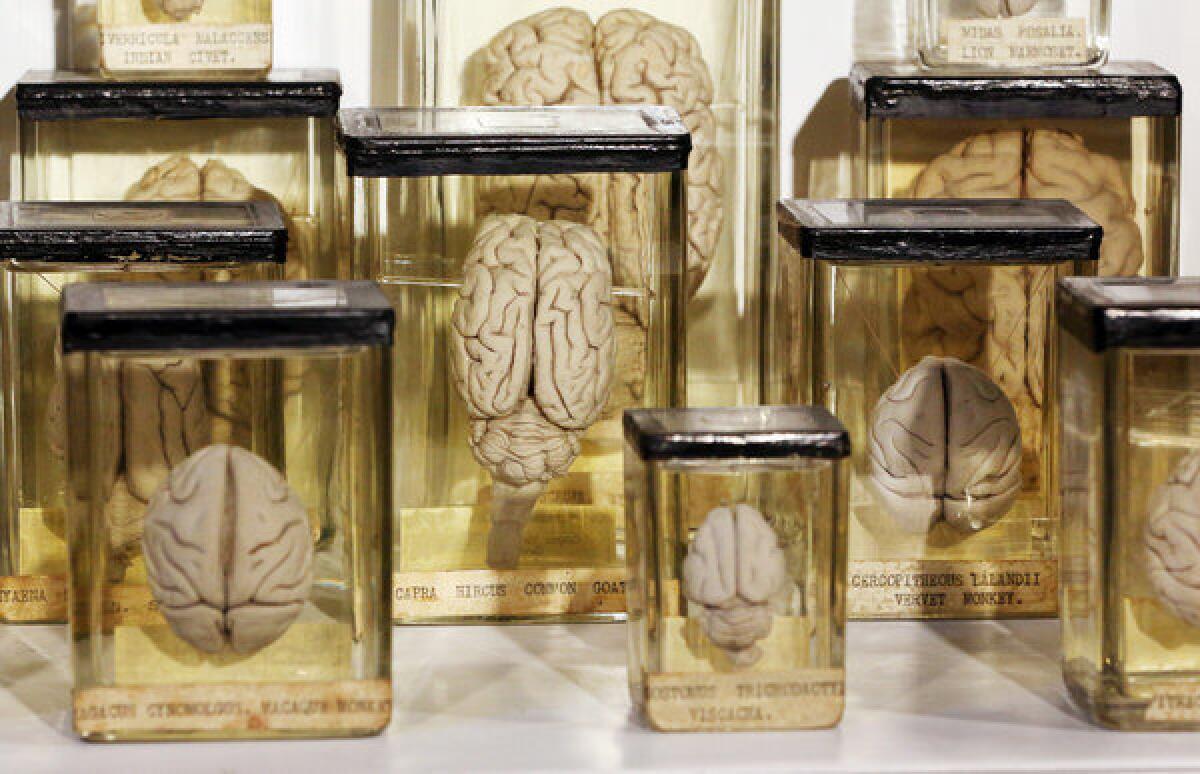New computer model of the brain focuses on seeing and doing

A new computer model of the brain can perceive, process and act on visual information, such as questions from an IQ test.
The model, published Thursday in the journal Science, only simulates about 2.5 million of the estimated 60 billion to 100 billion cells in the brain, but it is the first to connect simulated activity of those cells to actual behaviors.
Over the last decade, an increasingly ambitious group of neuroscience researchers has focused its energies on using computers to model the activity of the brain. For the most part, those researchers have attempted to expand the number of cells the models include while maintaining the biological accuracy of the simulations.
But the new model takes a different tack. Rather than focus on how many cells the model includes, the researchers have focused on getting from simulated brain activity to observable actions. And instead of just being comprised of a set of computer chips, the model includes a camera to “see” and a robotic arm to “act.”
The artificial brain can use these tools to carry out eight different tasks, including counting, memorizing numbers, and answering questions from an IQ test. The research team, led by Chris Eliasmith of the University of Waterloo in Canada, named the model Spaun.
What makes the model different from your iPhone or laptop, which can also take in information, process it, and act? While hardware and software engineers couldn’t care less about how our brains work, the model’s creators designed their model to replicate the properties of a small group of brain areas and the neurons contained within them, making all information processing and behavior the result of simulated brain cell activity. The areas were chosen because they are directly involved in visual perception, decision-making and movement.
The model attempts to replicate the brain’s approach to dealing with the inherent complexity of the visual world using a process called compression. While an image of a piece of white paper with the number six drawn on it might include thousands of pixels, only a handful are actually important to processing the image’s content. So the brain strips away all the useless pixels, passing on only the important information to specialized processing areas. Spaun attempts to replicate this process down to the brain cell activity patterns of the individual brain areas.
In an accompanying editorial, Christian Machens points out that, with Spaun, the researchers have skipped over an essential part of any complete model of the nervous system: learning. While Spaun can perform eight tasks with ease, it cannot learn a new one.
Nevertheless, Machens writes, Spaun is a huge step forward in nervous system modeling because of its focus on translating thought to action: “Spaun levels the playing field by setting a new goal and a new benchmark for such simulations: to not simply incorporate the largest number of neurons or the greatest amount of detail, but to reproduce the largest amount of functionality and behavior.”
Return to the Science Now blog.






